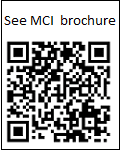Labour, environment & water .

World Steel Industry Trends.
Global trends in labour, environmental and water issues
Labour
Labour costs are relatively small in the steel industry, since the processes are generally capital- rather than labour-intensive. An advantage of labour cost is therefore generally not decisive in determining the competitive position of a steel producer. Access to captive raw materials, transport costs for raw materials and products, technical efficiency and process losses are usually more significant than the cost of labour in determining the difference between plants. The labour cost element becomes increasingly important with the degree of processing of the steel product - production of tinplate is more labour intensive than production of slab. This is one reason for the rapid movement of some producers (e.g. in Japan) into downstream products, such as organic coated coil, where their labour cost advantage can offset their fundamental disadvantage of importing raw materials.
Large steel companies are usually unionised and have wage rates that are high by national standards. Strong unions can often restrict the flexibility of a plant in its response to market conditions. Smaller plants sometimes have the advantage of non-union employment.
Large steel plants are often major employers in their local area, with two consequences. The first is a strong political position, which enables steel companies to be heard in government in such matters as disputes over unfairly priced imports or legislation over carbon taxes. The second is a potential obligation to maintain employment for political reasons, or to pay for social overheads such as company housing and medical facilities that might normally be the responsibility of governments.
Environmental issuesSteel producers face increased costs and restrictions on their operations to meet environmental regulations. This affects at least the following aspects of their operations.
- restrictions on iron and coal mining, particularly affecting mining in forest or other sensitive areas, such as in parts of Brazil and India. These can create a severe delay or completely block the supply of raw materials.
- restrictions on forestry, affecting the supply of charcoal, which is an input to some pig iron production in Brazil. This type of operation will be required to be completely self-sufficient by replanting all trees consumed.
- limits on chemical emissions, dust and noise in urban areas. This will severely limit the ability of steel producers in Western Europe, North America and Japan to expand or renew their existing capacity, particularly for the more noxious processes of coke and sinter production. This is likely to lead to relocation of the basic steelmaking operations of integrated producers to other countries, such as a shift from Western to Eastern Europe and from North to South America.
- taxes on carbon. Integrated steelmaking based on coal is a larger emitter of carbon dioxide. In the short and medium term carbon taxes will have transitional exemptions for existing producers, but they will eventually have to pay those taxes. This provides a competitive advantage to countries that do not levy such taxes and capacity for integrated steelmaking may be located or relocated in those countries. Electric steelmakers will not avoid carbon taxes because the tax will be in the price of purchased electricity, where that is generated from coal or gas.
The steel industry is a large consumer of water. This includes water for:
- concentration in the iron ore mining industry
- coal washing in the coking coal industry
- cooling of furnaces in iron and steelmaking
- lubrication and cooling in the hot-rolling process.
It would seem that water supply will not be a large issue for an EAF steel plant and associated rolling mill, but would become significant for an integrated steel plant or if iron ore mining requires a wet concentration process to upgrade the crude ore (as opposed to a dry process in which the iron can be magnetically separated from the ore without large quantities of water for flotation or other processes).
Plants in Qatar, Saudi Arabia, UAE and Oman are in desert locations. These have DRI and EAF processes and perhaps use desalinated seawater produced in association with their gas-fired electricity generation. Water supply does not seem to be an issue restricting their expansion. In other countries the availability or price of water supply will be a limiting factor on the development of the steel industry. In all cases investment will be needed in water recycling processes to minimise the requirement for fresh water supplies.
To contact us about this steel industry productivity trends page please email info@steelonthenet.com.





